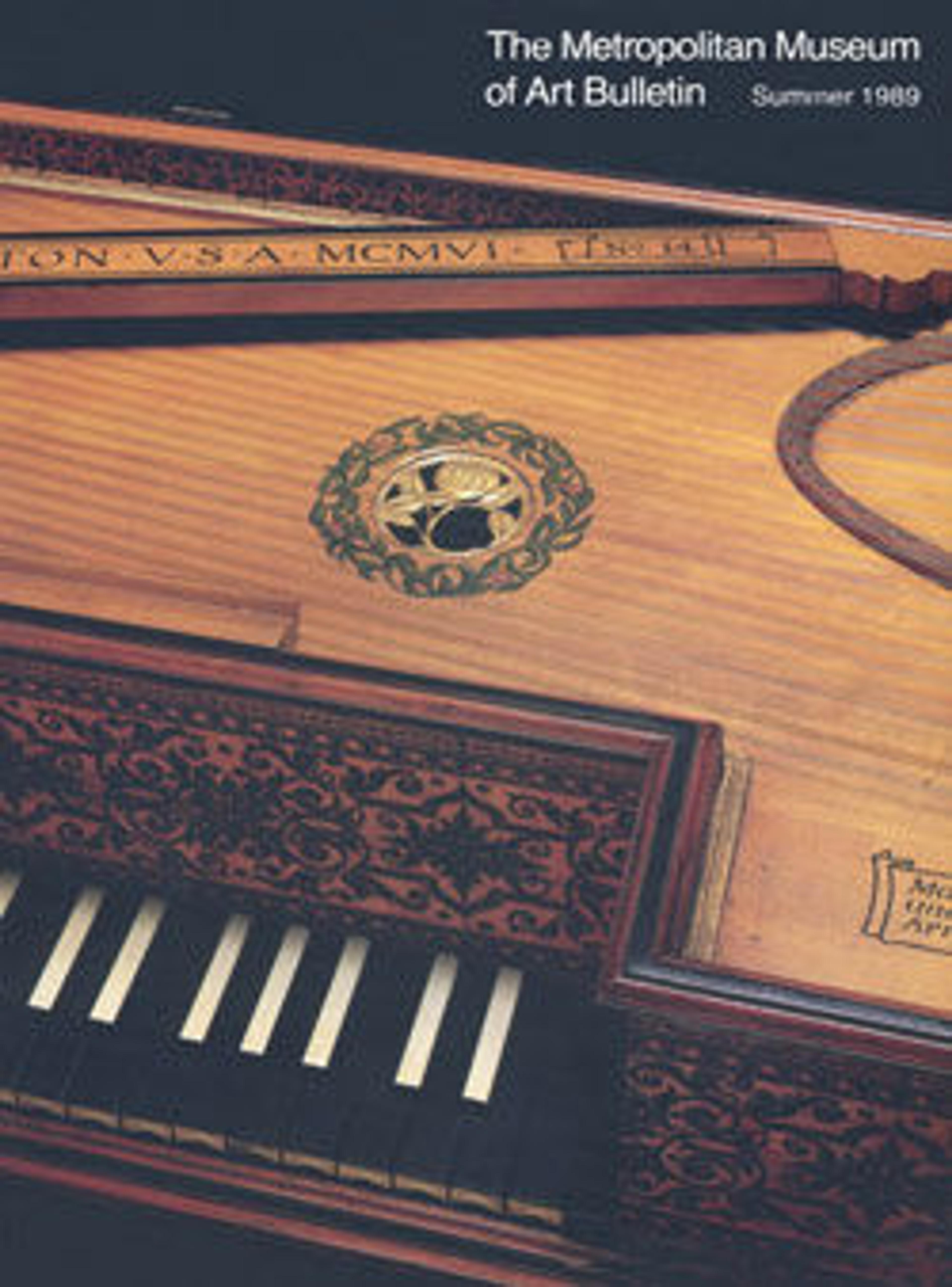Harpsichord
The French piano building firm of Pleyel turned its attention to the creation of harpsichords in the 1920s. Unlike other makers, such as Chickering with its Dolmetsch designs, rather than focusing on recreating or copying historic instruments, Pleyel imagined more modern instruments that incorporated elements of late piano development such as an iron frame. The famed harpsichordist Wanda Landowska commissioned such instruments from the Pleyel firm and through her notoriety, composers such as Francis Poulenc and Manuel de Falla wrote pieces for it.
This example is a "model reduit" and was shipped from the Pleyel factory on December 23, 1928. It belonged to Frank LaForge of Rockford, Illinois for many years. LaForge was a composer, voice teacher, and accompanist, and used this harpsichord in concerts with Lily Pons in New York City.
Technical description: Satinwood case with tulipwood striping, interior veneered with mahogany, on 4 tapered legs; 2 manuals, AA-f3, ivory naturals with bone fronts, ebony accidentals; 6 pedals operating (left to right) 4', lower 8', buff, coupler, upper 8' lute, upper 8'; overhead dampers, twin-pin tuning mechanism, full cast iron plate, leather plectra; rosette with P Cie monogram, folding music rack; with matching bench with floral needlepoint cushion.
This example is a "model reduit" and was shipped from the Pleyel factory on December 23, 1928. It belonged to Frank LaForge of Rockford, Illinois for many years. LaForge was a composer, voice teacher, and accompanist, and used this harpsichord in concerts with Lily Pons in New York City.
Technical description: Satinwood case with tulipwood striping, interior veneered with mahogany, on 4 tapered legs; 2 manuals, AA-f3, ivory naturals with bone fronts, ebony accidentals; 6 pedals operating (left to right) 4', lower 8', buff, coupler, upper 8' lute, upper 8'; overhead dampers, twin-pin tuning mechanism, full cast iron plate, leather plectra; rosette with P Cie monogram, folding music rack; with matching bench with floral needlepoint cushion.
Artwork Details
- Title: Harpsichord
- Manufacturer: Pleyel et Cie
- Date: 1928
- Geography: Paris, France
- Culture: French
- Medium: Wood, various materials
- Dimensions: L. 187cm
W. 102 cm; (102.1 cm across lid)
D. without lid 31.6 cm
H. 96 cm
Bench: 63.7 x 43.6 x 49 cm high - Classification: Chordophone-Zither-plucked-harpsichord
- Credit Line: Gift of Laura La Forge Webb, in memory of Frank La Forge, 1979
- Object Number: 1979.523.1, .2
- Curatorial Department: Musical Instruments
More Artwork
Research Resources
The Met provides unparalleled resources for research and welcomes an international community of students and scholars. The Met's Open Access API is where creators and researchers can connect to the The Met collection. Open Access data and public domain images are available for unrestricted commercial and noncommercial use without permission or fee.
To request images under copyright and other restrictions, please use this Image Request form.
Feedback
We continue to research and examine historical and cultural context for objects in The Met collection. If you have comments or questions about this object record, please contact us using the form below. The Museum looks forward to receiving your comments.
